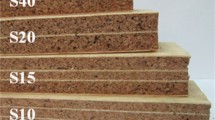Abstract
Four precast room-height wall panels, each comprising three distinct concrete layers—the middle one being lightweight aggregate concrete serving as a thermal insulation core-were experimentally investigated. They were tested up to failure under lengthwise loads applied axially—to the core—in two of them, and eccentrically—to the bearing layer—in the other two.
Results showed that the whole thickness of the walls participated in the load bearing process and that failure did not occur by buckling, but rather in the form of a vertical crack near the supports, and parallel to the layering.
Transverse reinforcement should be used, in construction practice, at both ends of the panel, so as to preclude earlier splitting failure.
Résumé
L'article décrit une étude expérimentale de murs préfabriqués à hauteur de chambre constitués de trois couches différentes de bétons: a) une couche portante faiblement armée; b) une couche non armée qui sert d'isolant thermique; c) une couche faiblement armée à façade granulaire.
Quatre murs ont été essayés à la rupture—deux sous charge centrée appliquée sur la couche isolante et les deux autres sous charge excentrée, sur la couche portante. Les résultats montrent que les panneaux ont eu un comportement élastique et que toute leur épaisseur participait dans la résistance à la rupture. Il en a résulté une fissuration verticale (parallèle aux couches) due à des efforts de tension transversaux près des points de support, indiquant que la capacité portante d'un mur multicouche dépend de la résistance à la tension de la couche de béton directement chargée.
On recommande dans les constructions d'utiliser une armature transversale aux extrémités des murs afin d'éviter le danger de fissuration et d'améliorer également la capacité portante du mur.
Similar content being viewed by others
References
Arnold P. J.—Thermal conductivity of masonry materials, Building Research Station, Garston, U.K., Current Paper 1/70, January 1970.
Lewicki B.—Bâtiments d'habitation préfabriqués en éléments de grandes dimensions, Eyrolles, Paris 1965 (chapter 7).
Hartland R. B.,Design of precast concrete, Surrey University Press, London, 1975 (chapter 3).
PCI Manual for structural design of architectural precast concrete, PCI publication, Chicago 1977 (chapters 5, 6).
Guyon Y.—Prestressed concrete, Wiley, New York, 1953.
Marshall W. T., Nelson H. M.—Structures, 2nd Edition, Pitman, London, 1977 (p. 341).
Author information
Authors and Affiliations
Rights and permissions
About this article
Cite this article
Rosenthal, I. Structural behaviour of loaded multilayer wall panels. Mat. Constr. 17, 329–332 (1984). https://doi.org/10.1007/BF02479091
Issue Date:
DOI: https://doi.org/10.1007/BF02479091




